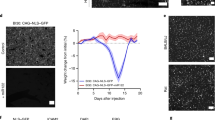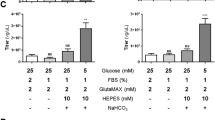Abstract
Using RT-PCR, we show that mouse adenovirus type I (MAV-1) is capable of infecting and expressing in various cell types, specifically human endothelial cells. The capability of MAV-1 to infect and express in human endothelial cells makes it a potentially useful alternative to the use of human adenoviruses type 2/5 (Ad2/5) in virus-based gene therapy, although presently MAV-1 can only be produced at lower titers than Ad2/5. In this report, we present methods for the purification of MAV-1 DNA and use of this DNA along with a modified bacteria-based homologous recombination protocol to generate a full-length plasmid clone of MAV-1 DNA. Using various transfection procedures, we show that this plasmid MAV-1 DNA can generate plaques of MAV-1 virus, albeit at low efficiencies (about 0.2 p.f.u./μg DNA). Furthermore, the construction of an MAV-1 plasmid along with its capability to express in human cells justifies the full development of MAV-1 into a system of gene therapy.
This is a preview of subscription content, access via your institution
Access options
Subscribe to this journal
Receive 12 print issues and online access
$259.00 per year
only $21.58 per issue
Buy this article
- Purchase on Springer Link
- Instant access to full article PDF
Prices may be subject to local taxes which are calculated during checkout




Similar content being viewed by others
References
Graham FL, Prevec L . Methods for construction of adenovirus vectors Mol Biotechnol 1995 3: 207–220
Kochanek S et al. A new adenoviral vector: replacement of all viral coding sequences with 28 kb of DNA independently expressing both full-length dystrophin and β-galactosidase Proc Natl Acad Sci USA 1996 93: 5731–5736
Haecker SE et al. In vivo expression of full-length human dystrophin from adenoviral vectors deleted of all viral genes Hum Gene Ther 1996 7: 1907–1914
McGrory WJ, Bautista DS, Graham FL . A simple technique for the rescue of early region I mutations into infectious human adenovirus type 5 Virology 1988 163: 614–617
Chartier C et al. Efficient generation of recombinant adenovirus vectors by homologous recombination in Escherichia coli J Virol 1996 70: 4805–4810
Hartley JW, Rowe WP . A new mouse virus apparently related to the adenovirus group Virology 1960 11: 645–647
Gall J, Kass-Eisler A, Leinwand L, Falck-Pedersen E . Adenovirus type 5 and 7 capsid chimera: fiber replacement alters receptor tropism without affecting primary immune neutralization epitopes J Virol 1996 70: 2116–2123
Wickham TJ, Carrion ME, Kovesdi I . Targeting of adenovirus penton base to new receptors through replacement of its RGD motif with other receptor-specific peptide motifs Neuromusc Dis 1997 7: 284–298
Douglas JT, Curiel DT . Strategies to accomplish targeted gene delivery to muscle cells employing tropism-modified adenoviral vectors Neuromusc Dis 1997 7: 284–298
Krasnykh VN, Mikheeva GV, Douglas JT, Curiel DT . Generation of recombinant adenovirus vectors with modified fibers for altering viral tropism J Virol 1996 70: 6839–6846
Blailock ZR, Rabin ER, Melnick JL . Adenovirus endocarditis in mice Science 1967 157: 69–70
Heck FCJ, Sheldon WG, Gleiser CA . Pathogenesis of experimentally produced mouse adenovirus infection in mice Am J Vet Res 1972 33: 841–846
Guida JD et al. Mouse adenovirus type 1 causes a fatal hemorrhagic encephalomyelitis in adult C57BL/6 but not BALB/c mice J Virol 1995 69: 7674–7681
Kring SC, King CS, Spindler KR . Susceptibility and signs associated with mouse adenovirus type 1 infection of adult outbred Swiss mice J Virol 1995 69: 8084–8088
Engel JP . Viral upper respiratory infections Semin Resp Infect 1995 10: 3–13
Ketner G et al. Efficient manipulation of the human adenovirus genome as an infectious yeast artificial chromosome clone Proc Natl Acad Sci USA 1994 91: 6186–6190
Hirt B . Selective extraction of polyoma DNA from infected mouse cell cultures J Mol Biol 1967 26: 365–369
Graham FL, Prevec L . Manipulation of adenovirus vectors. In: Murray EJ (ed) Gene Transfer and Expression Protocols Humana Press: Clifton, NJ 1991 pp 109–128
Graham FL, van der Eb AJ . A new technique for the assay of infectivity of human adenovirus 5 DNA Virology 1973 52: 456–467
Larsen SH . Evolutionary variants of mouse adenovirus containing cellular DNA sequences Virology 1982 116: 573–580
Stoflet ES, Koeberl DD, Sarkar G, Sommer SS . Genomic amplification with transcript sequencing Science 1988 239: 491–494
Thornton SC, Mueller SN, Levine EM . Human endothelial cells: use of heparin in cloning and long-term serial cultivation Science 1983 222: 623–625
Gimbrone MAJ . Culture of vascular endothelium Prog Hemost Thromb 1976 3: 1–28
Shinagawa M et al. A rapid and simple method for preparation of adenovirus DNA from infected cells Microbiol Immunol 1983 27: 817–822
Cox GA et al. Overexpression of dystrophin in transgenic mdx mice eliminates dystrophic symptoms without toxicity (see comments) Nature 1993 364: 725–729
Wang RF, Kushner SR . Construction of versatile low copy number vectors for cloning, sequencing and gene expression in Escherichia coli Gene 1991 100: 195–199
Wiegand RC, Beattie KL, Holloman WK, Radding CM . Uptake of homologous single-stranded fragments by superhelical DNA. III. The product and its enzymic conversion to a recombinant molecule J Mol Biol 1977 116: 805–824
Schaack J, Ho WY, Freimuth P, Shenk T . Adenovirus terminal protein mediates both nuclear matrix association and efficient transcription of adenovirus DNA Genes Dev 1990 4: 1197–1208
Miyake S et al. Efficient generation of recombinant adenoviruses using adenovirus DNA–terminal protein complex and a cosmid bearing the full-length virus genome Proc Natl Acad Sci USA 1996 93: 1320–1324
Kring SC, Spindler KR . Lack of effect of mouse adenovirus type 1 infection on cell surface expression of major histocompatibility complex class I antigens J Virol 1996 70: 5495–5502
Chirgwin JM, Przybyla AE, MacDonald RJ, Rutter WJ . Isolation of biologically active ribonucleic acid from sources enriched in ribonuclease Biochemistry 1979 18: 5294–5299
Meissner JD et al. Completion of the DNA sequence of mouse adenovirus type 1: sequence of E2B, L1, and L2 (18–51 map units) Virus Res 1997 51: 53–64
Ball AO, Williams ME, Spindler KR . Identification of mouse adenovirus type 1 early region 1: DNA sequence and a conserved transactivating function J Virol 1988 62: 3947–3957
Kusano K, Nakayama K, Nakayama H . Plasmid-mediated lethality and plasmid multimer formation in an Escherichia coli recBC sbcBC mutant. Involvement of RecF recombination pathway genes J Mol Biol 1989 209: 623–634
Hanahan D . Studies on transformation of Escherichia coli with plasmids J Mol Biol 1983 166: 557–580
Acknowledgements
We thank Dr Christopher CW Hughes for providing Phec 97–54 primary umbilical endothelial cells. We thank Siddiqua Hirst and Mervin R Gutierrez for excellent technical assistance. This work was supported by a grant from the Muscular Dystrophy Association to LPV Additional facility support was from the Irvine Research Unit on Animal Viruses and the Viral Vector facility.
Author information
Authors and Affiliations
Rights and permissions
About this article
Cite this article
Nguyen, T., Nery, J., Joseph, S. et al. Mouse adenovirus (MAV-1) expression in primary human endothelial cells and generation of a full-length infectious plasmid. Gene Ther 6, 1291–1297 (1999). https://doi.org/10.1038/sj.gt.3300949
Received:
Accepted:
Published:
Issue Date:
DOI: https://doi.org/10.1038/sj.gt.3300949
Keywords
This article is cited by
-
Development of Novel Adenoviral Vectors to Overcome Challenges Observed With HAdV-5–based Constructs
Molecular Therapy (2016)
-
Adenovirus serotype 35 vector-mediated transduction into human CD46-transgenic mice
Gene Therapy (2006)



